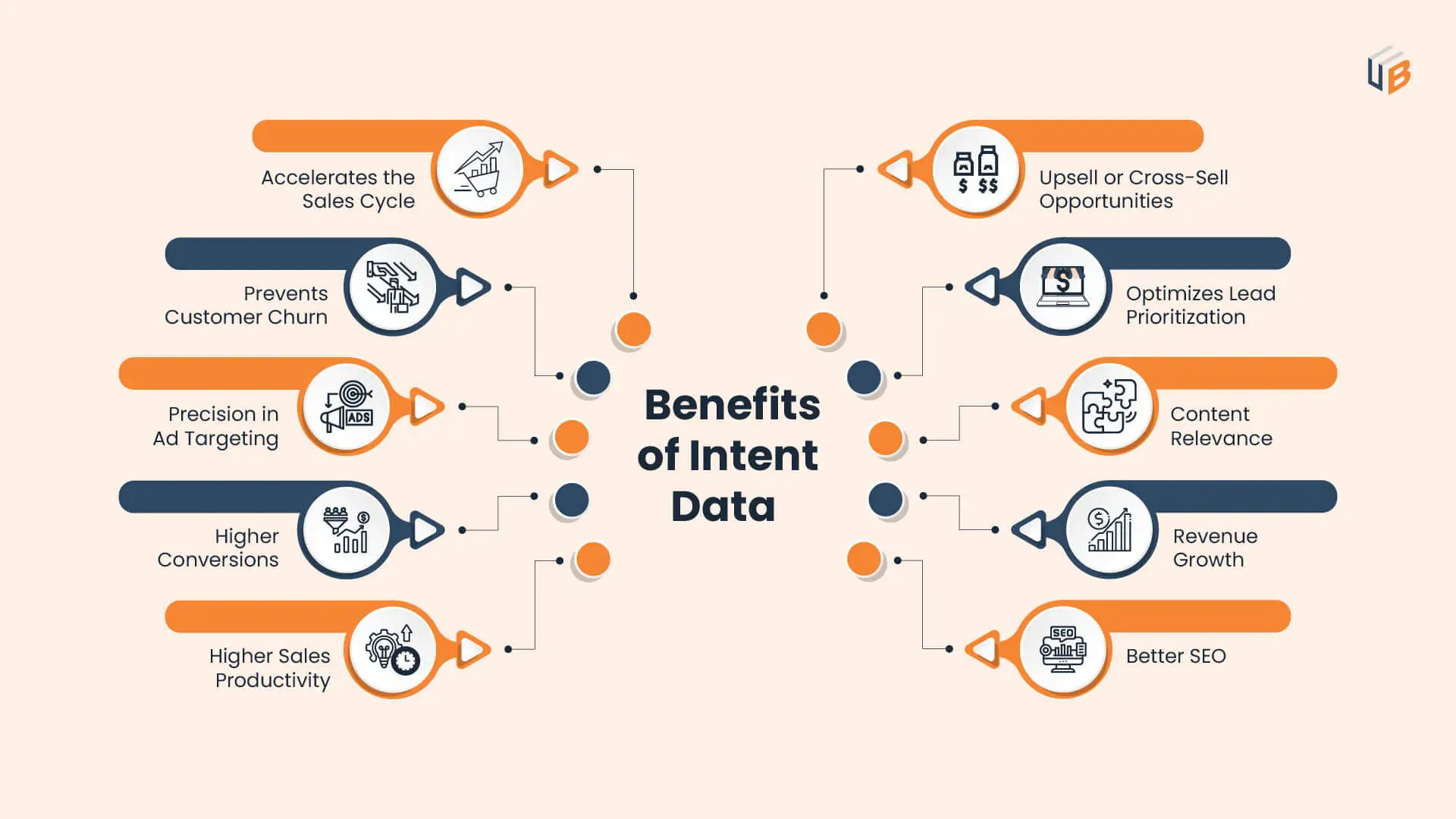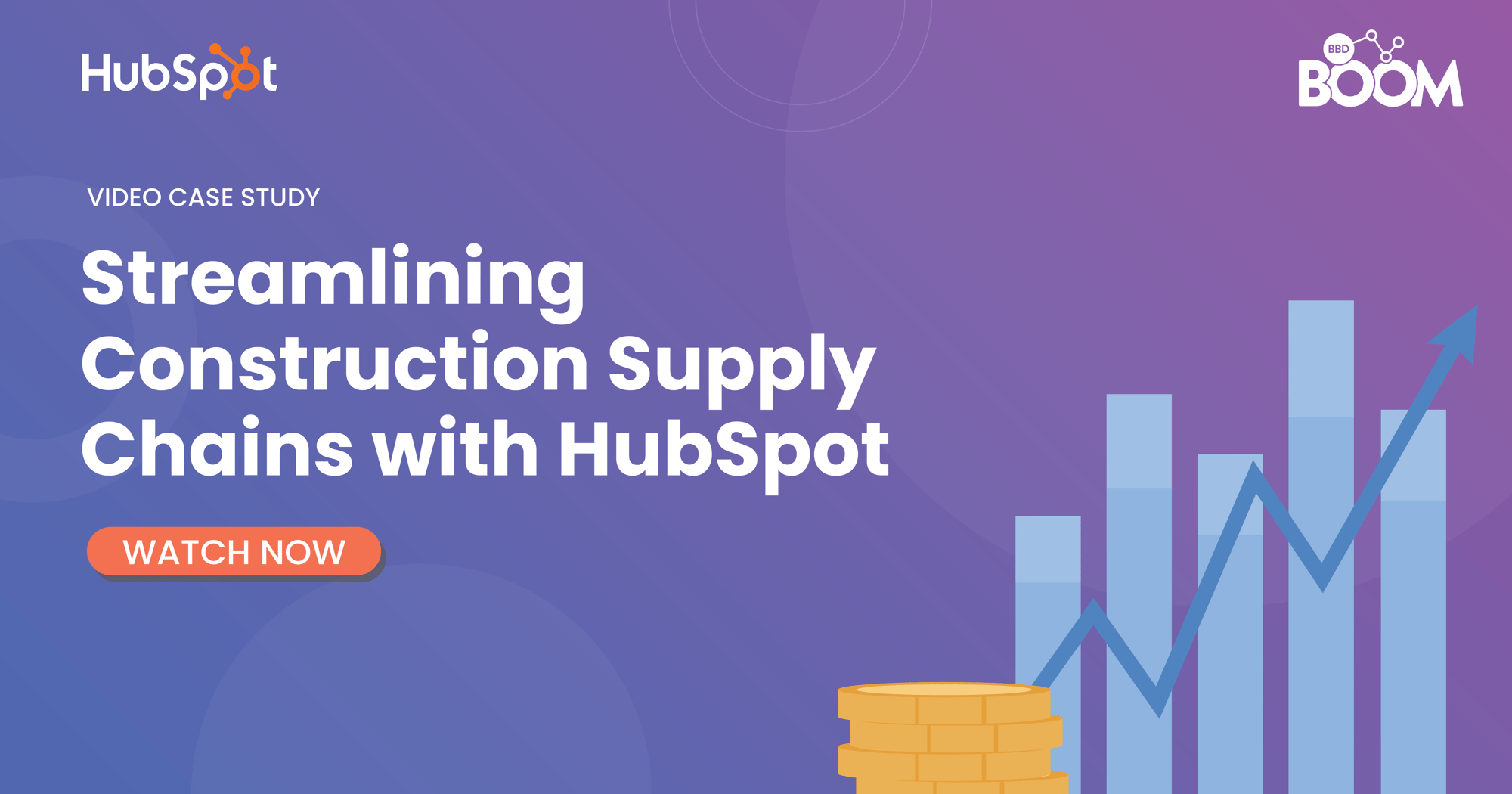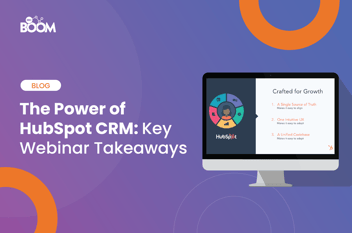Let’s be honest: generating leads isn’t the hard part anymore. The challenge today is knowing which leads are ready to buy and focusing your efforts where they’ll have the biggest impact. That’s where a smart, modern revenue engine comes in. With HubSpot at the centre and intent data powering your engine, you can finally align your teams, prioritise high-intent prospects, and maximise revenue outcomes. Let’s break it all down.
What Is Intent Data (and Why Should You Care)?
Intent data gives you a peek into what your buyers are actually thinking about - before they ever fill out a form or pick up the phone. Also known as buyer intent data or purchase intent data, it’s all about tracking the digital clues your target audience leaves behind. These little clues show what topics they’re researching, what problems they’re trying to solve, and what solutions they’re exploring.
In short: intent data helps predict whether someone is gearing up to make a purchasing decision in your industry.
For sales and marketing teams, this is digital gold. With the right intent signals, you can spend less time guessing and more time focusing on the leads that actually matter - getting you to the right people, at the right time. Intent data also enables you to craft more more relevant, personalised outreach which will help you shorten the sales cycles and boost conversion rates.

How HubSpot + Intent Data Work Together
HubSpot is the central hub where your revenue engine runs, combining CRM, marketing automation, sales enablement, and customer success tools. When you connect intent data to HubSpot, you add rocket fuel to that engine by giving teams deeper insights and sharper targeting capabilities.
1️⃣ Integrate Third-Party Intent Data Tools
-
Tools like Bombora, ZoomInfo, G2 Buyer Intent, and Cognism can be integrated with HubSpot to bring external intent signals directly into your CRM.
-
These tools track off-site activities — like when a company is reading competitor content or showing increased topic interest — and push those insights into HubSpot contact or company records.
-
Once inside HubSpot, you can segment audiences, trigger campaigns, and surface insights to your sales reps.
2️⃣ Use HubSpot’s Native Buyer Intent Tool
-
HubSpot has its own Buyer Intent tool, available on certain tiers, that tracks on-site behaviour — like which pages a prospect visits, how often they engage, and what actions they take.
-
Combined with off-site intent data, this gives you a 360° view of buyer behaviour, both inside and outside your ecosystem.
- Not only does the tool automatically show you who your visitors are and where their interest is, but it also allows you to do intent research by searching the topics you care about, filter by fit, and intent level.
-
Once you save the company to your CRM, use HubSpot workflows to automatically trigger outreach, apply fit score, assign leads, or notify reps when someone hits key intent thresholds.

Step-by-Step: Building Your Revenue Engine With HubSpot's Buyer Intent Tool
So, you know what intent data is. You know how it pairs beautifully with HubSpot. Now - let’s build the actual revenue engine.
Using HubSpot’s Buyer Intent Tool, we can set up a system that finds high-intent leads, nurtures them at the right time and fast-tracks them through the sales pipeline.
Here’s how to do it:
1. Identify High-Intent Companies
 Start by diving into your Buyer Intent dashboard. You’ll see a list of companies that are actively researching your business or similar solutions.
Start by diving into your Buyer Intent dashboard. You’ll see a list of companies that are actively researching your business or similar solutions.
Look for key signals like:
-
Topic intent level: What topics are they researching?
-
Engagement frequency: How often are they looking?
-
Recent activity: Has their interest spiked lately?
Focus on companies with high intent scores and relevant topics - these are your future customers.
2. Build Lists for Targeting
Organisation is key. Use HubSpot’s lists to segment these high-intent companies automatically.
Ideas for Lists:
-
Companies researching a particular solution (e.g., “CRM integrations”).
-
Companies with a spike in buyer activity over the past two weeks.
-
Companies exceeding a certain intent score threshold.
3. Enhance Lead Scoring with Intent Signals
Your leads aren’t all equal - so let’s make sure the hottest ones rise to the top.
Update your lead scoring model to include:
-
+20 points for "High Intent" companies.
-
Extra points for specific buying topics (e.g., “enterprise CRM” = +10).
-
Bonus points for a recent spike in research activity.
This will fast-track high-potential prospects to your sales team while deprioritising colder leads.
4. Trigger Automated Workflows
Automation is where your revenue engine really starts to run itself.
Example Workflow Actions:
-
Notify sales reps immediately when a company shows high intent.
-
Assign tasks for a follow-up call or personalised email.
-
Send nurture emails with content aligned to the intent topic.
Enroll contacts in specific sequences, like competitor comparison guides or ROI calculators.
Example:
-
Trigger: Company Intent Score > 70
-
Action 1: Create task for assigned rep to call within 24 hours
-
Action 2: Send curated resource email based on intent topic
5. Personalise Sales and Marketing Outreach
Once the workflows are in motion, personalise your touchpoints based on intent data.
Tips for Personalisation:
-
Mention the exact topic they’re researching in your email subject line.
-
Reference competitor comparisons if you know they’re evaluating options.
- Offer tailored resources (case studies, webinars, product demos) aligned to their interest.
Example Email Opener:
"Hi [First Name],
I noticed your team has been exploring CRM solutions lately. We’ve helped companies like [Similar Company] find the right fit - here’s a quick guide comparing top platforms..."
⚡ Quick Win: Use snippets or personalisation tokens in your HubSpot templates to auto-insert relevant intent topics.
Measuring Impact - KPI's to Track
Building a revenue engine powered by HubSpot’s Buyer Intent Tool is only part of the equation. To truly make it work, you need to track performance - not just to prove ROI, but to uncover what’s working, what’s not, and where you can optimise.
The beauty of working within HubSpot is that the platform gives you everything you need to measure success, without the hassle of disconnected systems. With your Buyer Intent data flowing into your CRM, you can tap into HubSpot’s reporting dashboards and custom reports to track your engine’s performance in real time.
One of the most telling metrics to watch is sales velocity - how quickly your intent-driven leads are moving from initial engagement to closed deals. With HubSpot’s custom sales dashboards, you can build reports that show average deal velocity segmented by buyer intent level. Typically, leads identified through intent data will move faster, shaving days or even weeks off your average sales cycle.

Equally important is tracking conversion rates. Using HubSpot’s lifecycle stage reporting, you can compare the conversion rates of high-intent leads versus your standard inbound or marketing-qualified leads. This will tell you if your revenue engine is effectively prioritising the right prospects and turning interest into opportunity.
Don’t stop at the middle of the funnel, though. Revenue attribution is where you prove the engine’s full value. HubSpot’s Revenue Attribution tool allows you to tie closed revenue back to specific intent-triggered activities, whether it was a first touch on an email or a last touch from a sales rep’s follow-up call. By connecting these dots, you get a clear view of how much pipeline and closed-won revenue was influenced by your intent strategies.

And finally, no measurement strategy is complete without looking at sales responsiveness. HubSpot’s task queues and activity reporting allow you to monitor how quickly your reps are reaching out to high-intent leads once they’re flagged. A lag of a few hours might not seem like much, but in a high-intent buying window, speed can make or break a deal.

If you’ve made it this far, congrats - you’re officially on the fast track to building a smarter, faster and far more efficient revenue engine. By pairing the power of intent data with HubSpot’s tools, you’re no longer guessing who’s ready to buy, you’re acting on real, meaningful signals.
The best part? Once you set it up, a lot of this magic runs behind the scenes, helping you connect with the right people at exactly the right moment.
Feeling inspired but not sure where to start? Or maybe you’re ready to take what you’ve built and scale it even faster? Either way, we’re here to help.
.png?width=877&height=508&name=bbd-boom-siloy-navy+blue-logo%20(1).png)
.png)

.jpg)

-1.png?width=50&name=Webinar%20Speakers%20(1)-1.png)
.jpg)

-1.png?width=90&name=Webinar%20Speakers%20(1)-1.png)

.png?width=352&name=Resource%20(5).png)
.png?width=352&name=Resource%20(4).png)